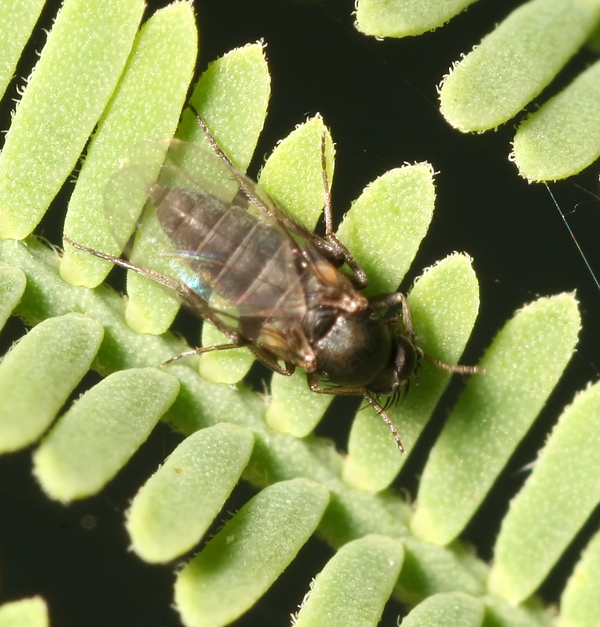Diptera.info :: Identification queries :: Diptera (adults)
|
Phoridae fly above leaf of Acacia sp.
|
|
| jorgemotalmeida |
Posted on 17-11-2006 22:28
|
|
Member Location: Viseu - PORTUGAL Posts: 9296 Joined: 05.06.06 |
HI * locality - Pedra Cavaleira - Silgueiros - Viseu - PORTUGAL * date - 13.11.2006 * size - 3mm - 4 mm (small fly) * habitat - woodland * substrate - Acacia sp. *Strong bristles in the head *Tergites easily seen *hind leg seems to be very hairy... are these characters give us Phoridae family? Which more hints can give us the family correctly? Please, tell me if is it possible provide to us the genus (or even species) level. Thank you! jorgemotalmeida attached the following image:  [193.22Kb] Edited by jorgemotalmeida on 17-11-2006 22:29 |
| Paul Beuk |
Posted on 17-11-2006 22:41
|
|
Super Administrator Location: Netherlands Posts: 19403 Joined: 11.05.04 |
Family is correct. Maybe someone can come up with the correct genus name...?
Edited by Paul Beuk on 17-11-2006 22:42 Paul - - - - Paul Beuk on https://diptera.info |
| Sabine Brenner |
Posted on 20-11-2006 22:54
|
|
Member Location: Austria Posts: 5 Joined: 20.11.06 |
There are 3 main characters to recognize a Phorid fly. 1.) the wing 2.) the 3rd antennal segment 3.) a characteristic haring of the hind-tibia ad 1.) the veins are reduced. You can differ between the so called "thick" an "thin" veins. The costa and radia belong to the thick ones the others are reduced and very thin. The costa never reaches the end of the wing and is littered with strong bristles. Except of the humeral-vein there are no other transverse veins. ad 2.) the 3rd antennal segment is very big, bigger than the 1st and 2nd one. The 1. and 2. segment can only be seen if you separate the antenna from the head have a look at: have a look at this drawings: http://delta-intkey.com/britin/images/bent4372.jpg I hope these informations are helpful. The species at the picture eventually could be a Megaselia species, but it is hard to see from dorsal. What I can say is, that it is a female  |
| jorgemotalmeida |
Posted on 20-11-2006 23:25
|
|
Member Location: Viseu - PORTUGAL Posts: 9296 Joined: 05.06.06 |
in other flies, for example, syrphidae flies - close eyes -- > male. Here seems no apply the rule.. how can we say that is a female? Tip abdomen? acute in this case... |
| jorgemotalmeida |
Posted on 20-11-2006 23:52
|
|
Member Location: Viseu - PORTUGAL Posts: 9296 Joined: 05.06.06 |
Megaselia sp. seems to be a plague in Acacia sp. ... Why do you have so many interest in Phoridae flies?  |
| Paul Beuk |
Posted on 21-11-2006 08:09
|
|
Super Administrator Location: Netherlands Posts: 19403 Joined: 11.05.04 |
jorgemotalmeida wrote: in other flies, for example, syrphidae flies - close eyes -- > male. Here seems no apply the rule.. how can we say that is a female? Tip abdomen? acute in this case... Indeed, by the tip of the abdomen. Paul - - - - Paul Beuk on https://diptera.info |
| Jump to Forum: |













